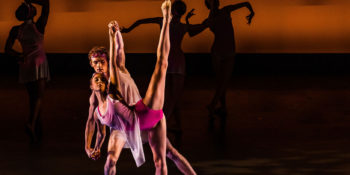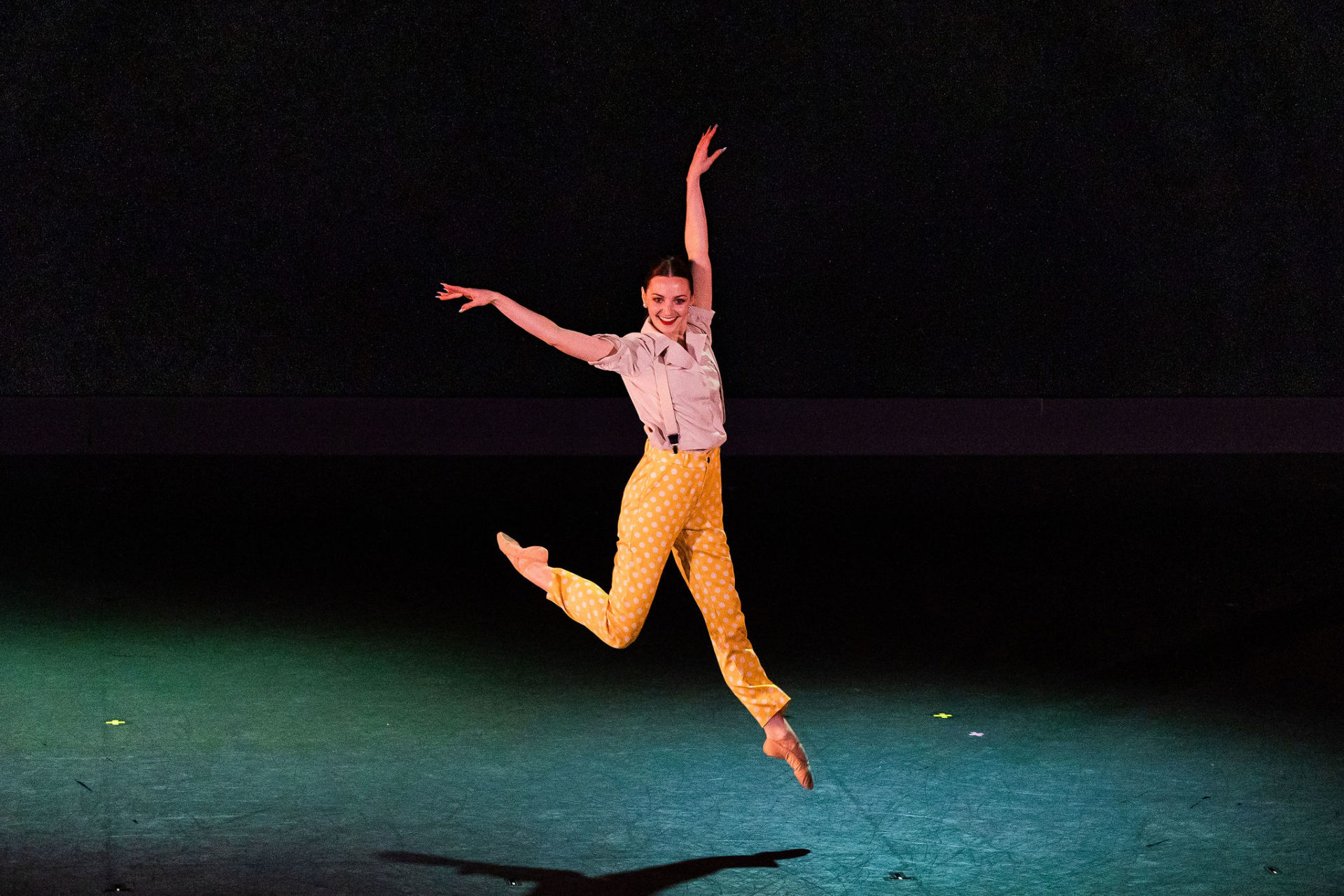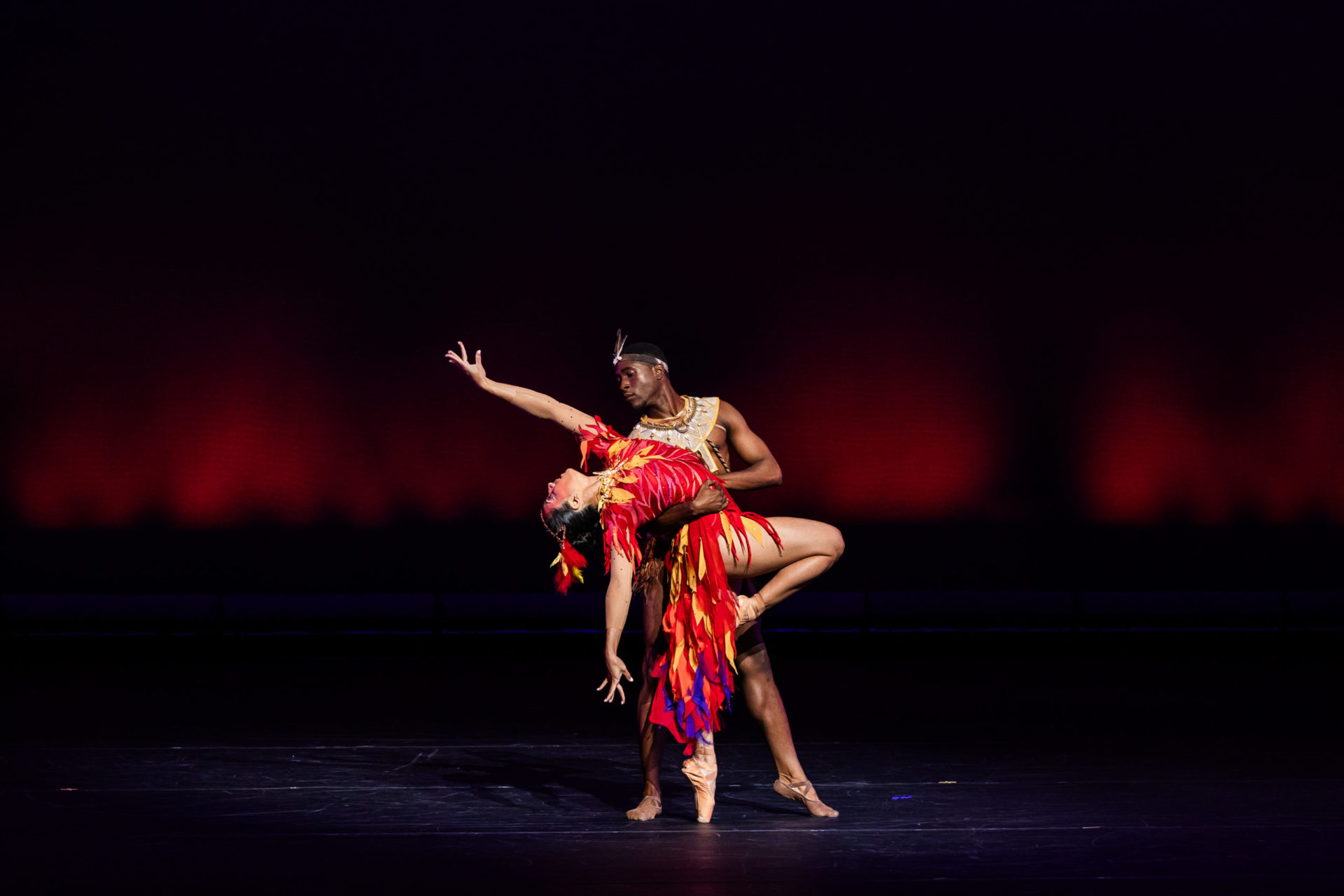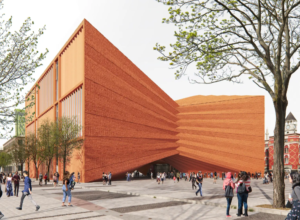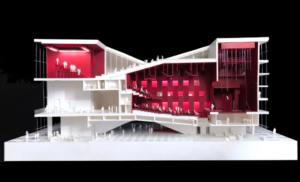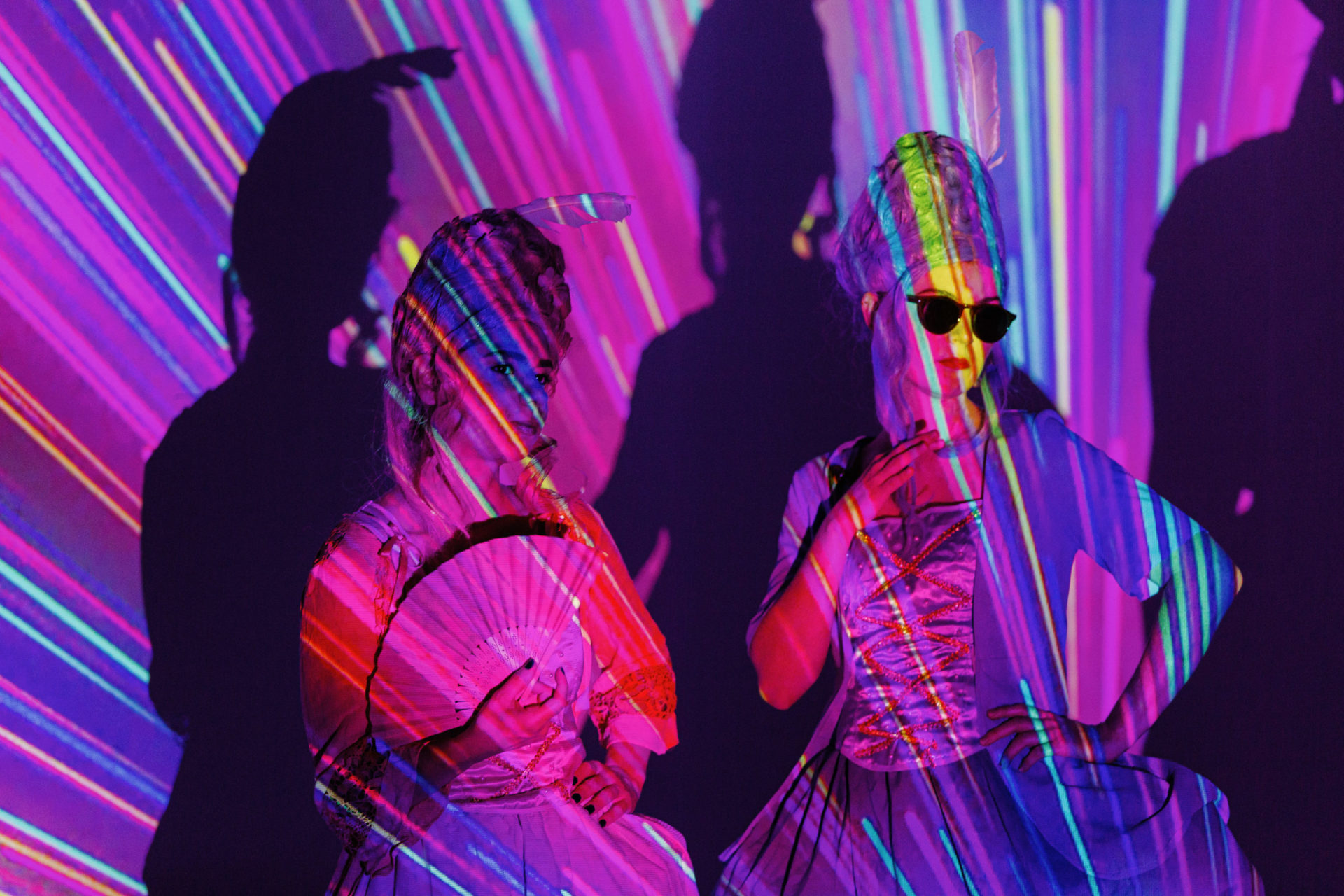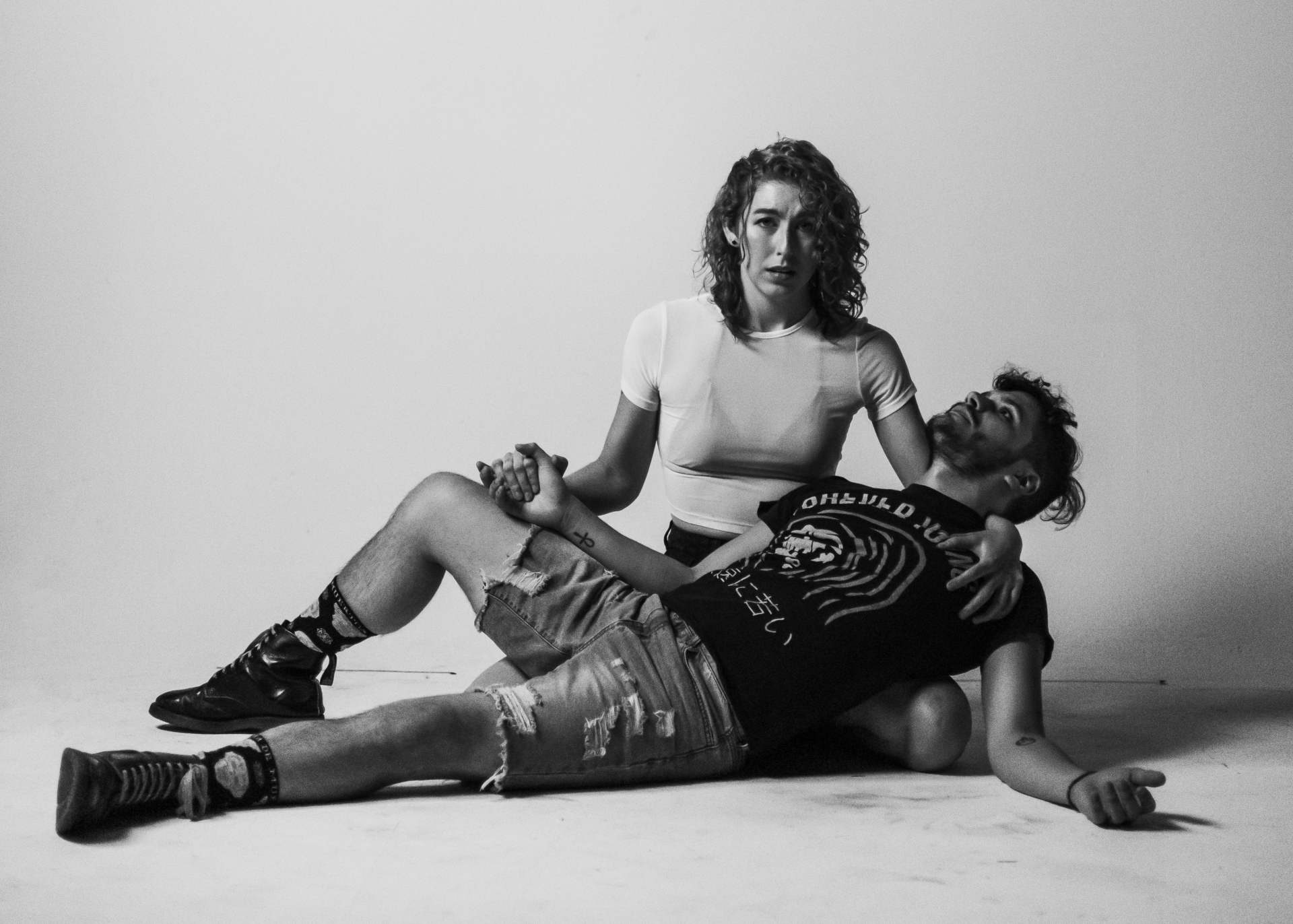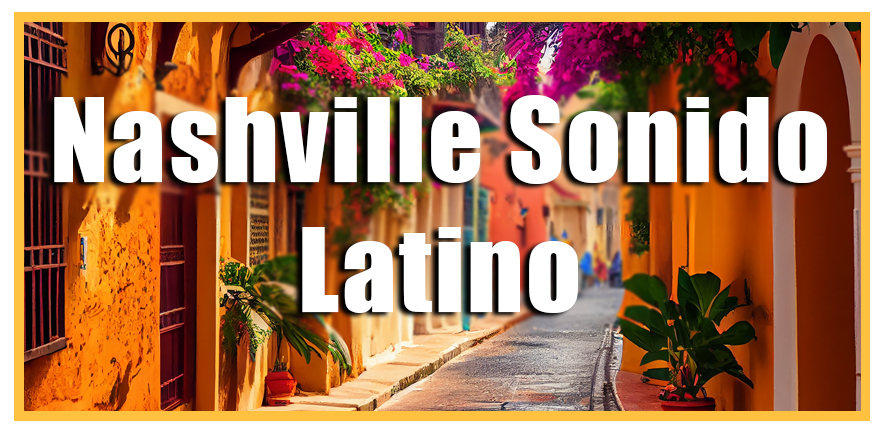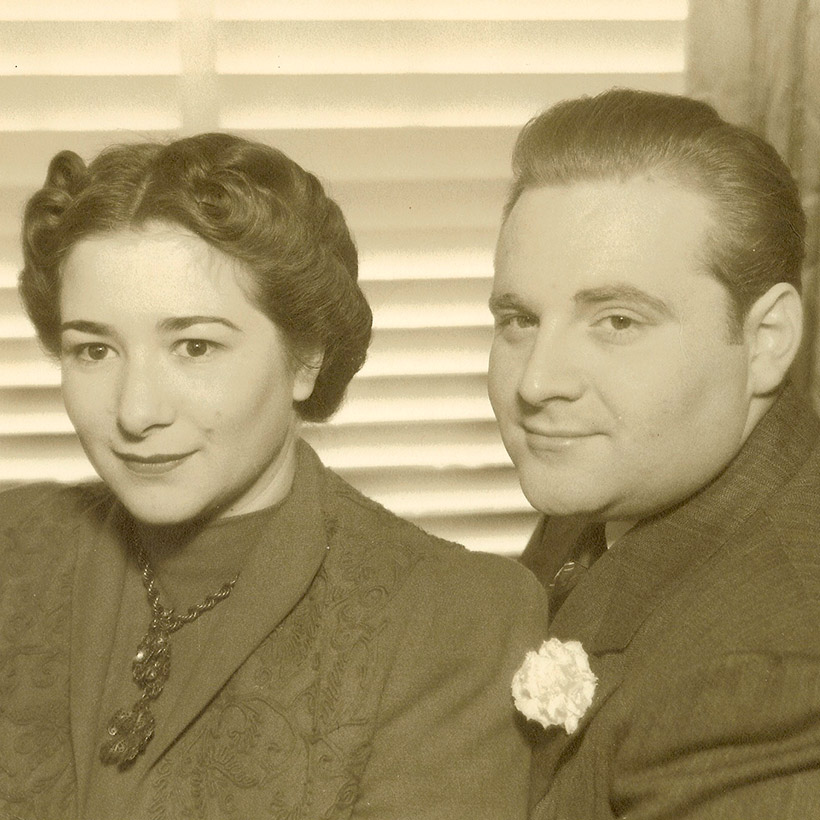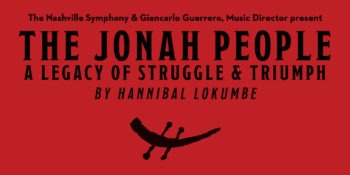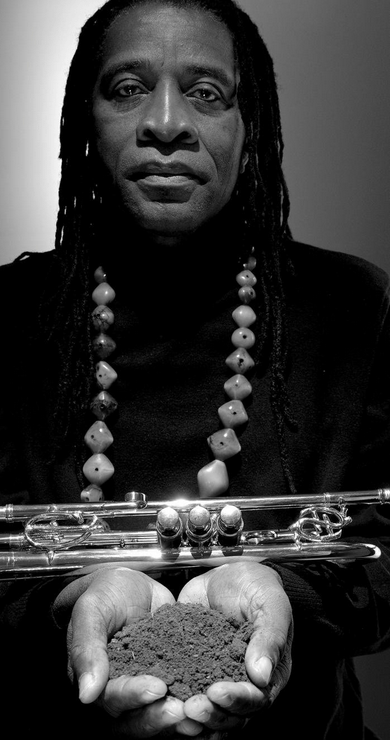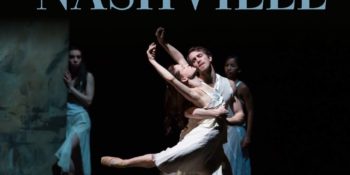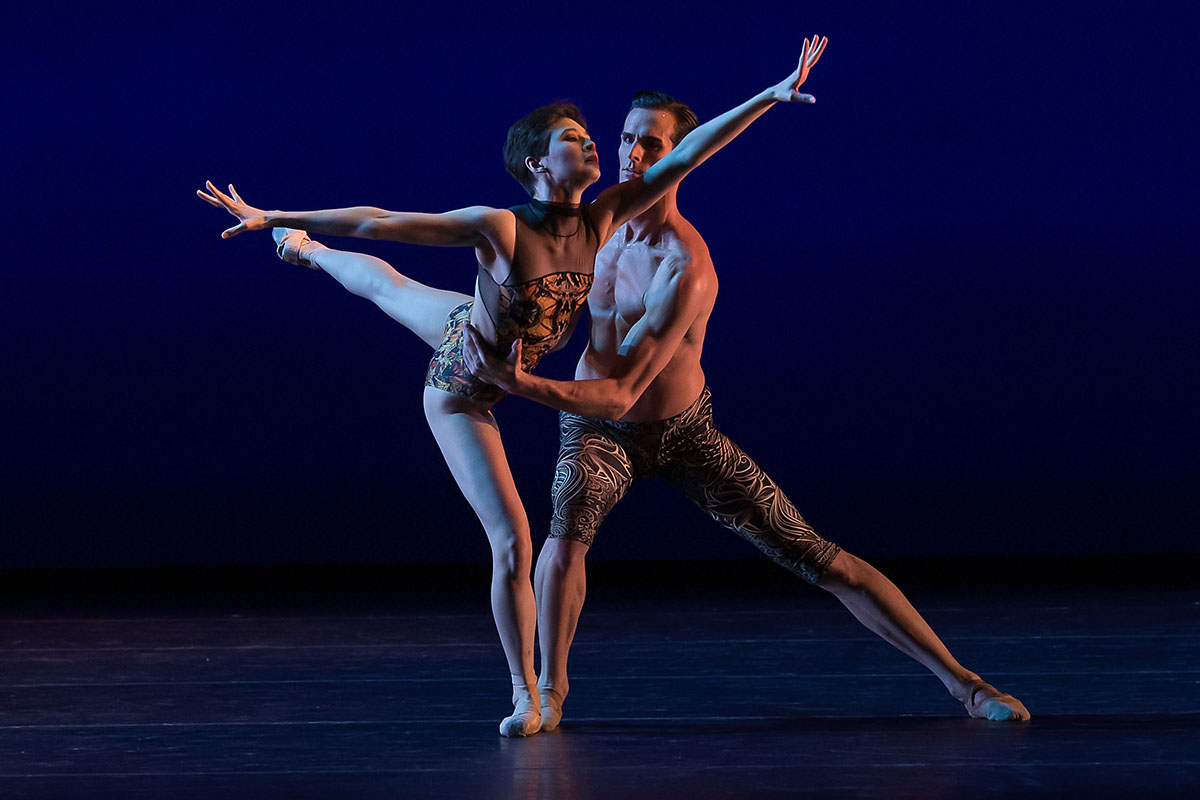From Vienna:
Sabine Devieilhe in Brahms Saal
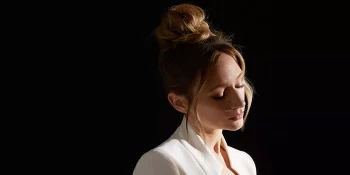
On Friday, June 16th, Sabine Devieilhe performed a recital of lieder by Austro-German composers in the historic Brahms-Saal at the Musikverein in Vienna, Austria. The sixth concert of the Liederabende series put on by the Musikverein, the concert featured excellent interpretations of mainstream and lesser-known works of quite influential composers on the Austrian musical landscape. As a result, the influences throughout, from composers centuries apart, were laid quite bare.
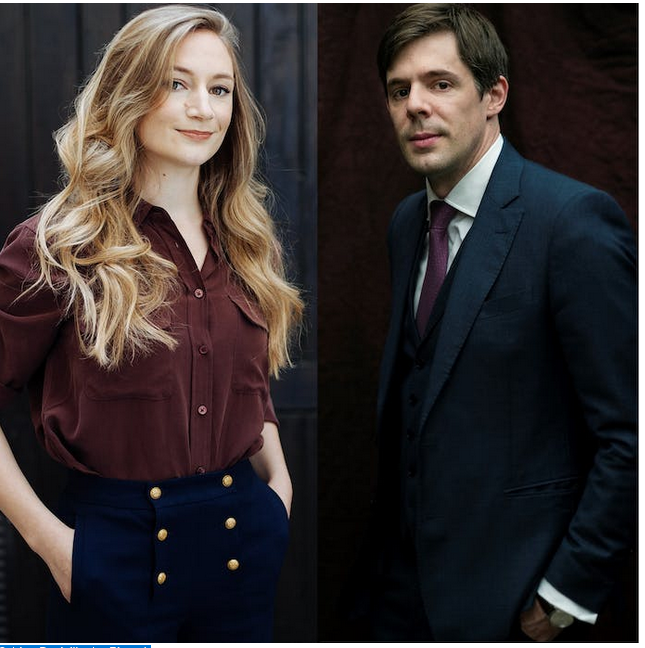
The evening opened with four early works by Alban Berg, written while the composer was still emerging from the tutelage of Arnold Schoenberg. The songs, for juvenilia, are remarkable in their direct, psychological expression. My favorites from the set were “Spielleute” and “Sehnsucht II.” After the performance of Berg’s Menuett für Klavier F-dur, a remarkable work (performed with great eloquence by Mathieu Pordoy) which clearly connects Berg to his Viennese ancestry, Devieilhe delivered a later version of “Schließe mir die Augen Beide” from 1925, when the composer had fully embraced an atonal language.
The contrast is powerful; the first song, with its adherence to poetic phrase and ideals of chromatic saturation, strongly contrasts with the later version which was itself Berg’s first foray into serialism. Hearing the two together is revelatory of the new style and there is no wonder that both have been performed together since 1930 when they were published for comparison by the music journal Die Musik. Devieilhe, who is probably most famous for her coloratura soprano, delivered the songs with a depth, expression and attention to historical nuance that could probably be sourced in her skills in musicology (she studied musicology at the University of Rennes). Considering this, and the fact that she had just completed a run of Poulenc’s Dialogues des Carmelites at the Vienna State Opera, as the character Soeur Constance, she is probably one of the most versatile singers on the contemporary landscape.
Next were a couple of songs by Wolfgang Amadé Mozart, including “Komm, liebe Zither, komm” and “Das Veilchen.” “Das Veilchen” is more of an ariette than a lied, with moments of recitative and shifting mood, always directed by the text. Its anthropromorphization of a violet, and the lament at its harsh ending points to later lieder from both Carl Maria von Weber and Franz Schubert. While these songs were lighter fare than the Berg that preceded these works and the Wolf Lieder to come, the Mozart works served as a pleasant reset and a grounding in the earliest of romantic (or the latest of classical) language in Mozart’s works.
 A late romantic, ahead of his time and on the precipice of the later movements of Impressionism and even Expressionism, Hugo Wolf’s lieder maintain an important place in the repertoire, pointing to the masterpieces of Schoenberg and Strauss even as they extend the worlds of Schubert through the chromatic universe of Wagner. Of the set, Devieilhe’s performance of “Wie glänzt der helle Mond” was most remarkable. The clear intonation and gentle vibrato in her instrument, standing out in chromatic beauty, brought out Wolf’s subtle expression of an anxious, passive, and older man confronted by a dominant woman.
A late romantic, ahead of his time and on the precipice of the later movements of Impressionism and even Expressionism, Hugo Wolf’s lieder maintain an important place in the repertoire, pointing to the masterpieces of Schoenberg and Strauss even as they extend the worlds of Schubert through the chromatic universe of Wagner. Of the set, Devieilhe’s performance of “Wie glänzt der helle Mond” was most remarkable. The clear intonation and gentle vibrato in her instrument, standing out in chromatic beauty, brought out Wolf’s subtle expression of an anxious, passive, and older man confronted by a dominant woman.
The second half of the program returned to a number of songs by Mozart, before proceeding to several by Richard Strauss. “Amor,” from Strauss’ Sechs Lieder, Opus 68, setting a text by Clemens Brentano, came off remarkably well. Strauss composed the songs for Elisabeth Schumann, a famous singer of his day with a light and delicate coloratura voice. Here Devieilhle allowed the delicacy of her instrument to blossom in an endearingly intimate manner.
Within the remarkable Brahms Saal, whose decay time is barely any shorter than that of the golden hall next-door, the high Romantic works of Wolf and Strauss were cushioned by a warmth in a space that both composers might have recognized. For the Mozart the room felt as though it might have been just a little too alive in the lower register, while for the Berg, especially in his atonal language, the decay was just too long and the clarity of his language somewhat blurred. Throughout, breaking these songs up with brief solo piano pieces, played with great delicacy by Pordov, was genius, allow both a palate cleansing and a moment to reflect before the next masterpiece.
In all, hearing these songs performed side by side brought the Viennese style into a sharp relief and left me wondering why Wolf, Strauss and even Mahler (an interesting lacuna in the program) aren’t accorded their own “Viennese School” by historians. In any case, one waits in anticipation for a recording! In the meantime, here is an old video of the two performing Mozart’s folk song “Ah! vous dirai-je, maman.”
Coming in June
The Latin Nashville Sound, June
(Versión en español aquí)
This June promises to kick off the summer season with an extraordinary variety of genres and artists who, from their Latin roots, have maintained their musical identity while also adapting to genres like country and rock ‘n roll. Internationally renowned artists, free events, and festivals will flood the city’s music venues.
GIOVANNI RODRÍGUEZ & 12 MANOS 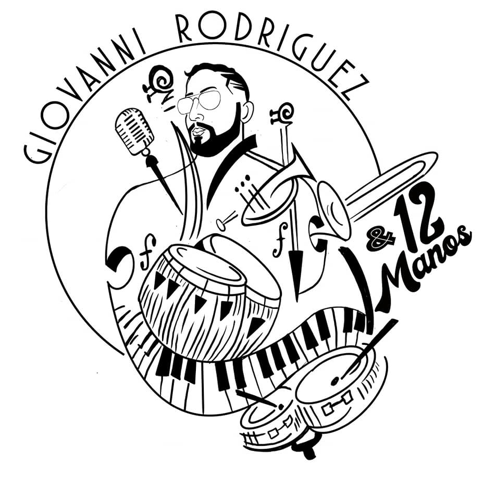
Rudy’s Jazz Room
Every Monday
9:00 PM
Admission $19.44+
Redes sociales: Instagram
Every Monday night at Rudy’s Jazz Room, the Caribbean sun awakens with the beat of congas. Giovanni Rodríguez, a multifaceted artist of Dominican descent based in Nashville, leads this project featuring prominent musicians from the city’s music scene. The venue offers a dance floor for this event to groove to the colorful rhythms of salsa, bachata, and Latin jazz.
KODIGOZ 
Plaza Mariachi
Sábado 1 de junio
5:30 PM – 7:00 PM
Free Admission
Social Media: Youtube Facebook Instagram
The indelible mark that Rock en Español has forged through generations is synonymous with identity and revolution. While it has found its influences in the Anglo-Saxon format, this genre has been built from the authenticity of each Spanish-speaking nation. Kodigoz has the power to imprint the style and essence of renowned artists in a fresh amalgamation that keeps the audience ecstatic.
RITMO SABROSO 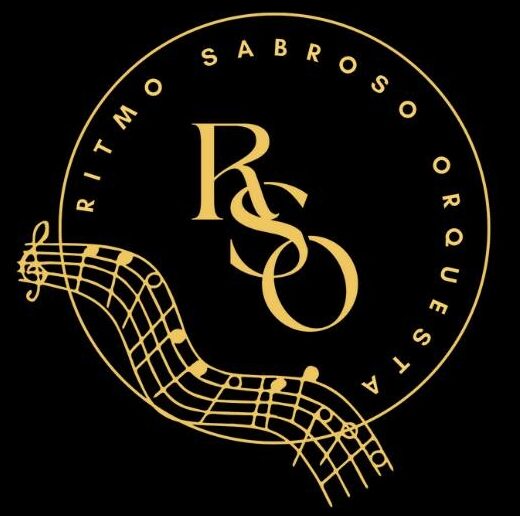
Plaza Mariachi
Saturday, June 1
8:30 PM – 10:00 PM
Free Admission
Social Media: Facebook Youtube
As its name suggests, Ritmo Sabroso is an orchestra that inevitably gets the audience on their feet to join the rhythm of salsa, merengue, and cumbia. These genres have undoubtedly infused generations of parties across Latin America and the music scene across the Atlantic. This group brings together experienced musicians from Venezuela, Colombia, Puerto Rico, and the United States, countries representative of the rich sound and cultural heritage of these genres. For those looking to enjoy a tropical night this weekend, this is an event not to be missed!
LOS KUMBIA BROTHERZ 
Plaza Mariachi
Sunday, June 2
7:00 PM – 8:30 PM
Tickets: $10 Facebook
Coming from Mexico and based in Memphis, Los Kumbia Brotherz represents the traditional sound of the güiro and the electric keyboard. Mexican cumbia, with its contagious rhythm and lyrics that narrate everyday life, strongly resonates with each listener’s story, making it a genre that has remained relevant in regional celebrations.
PORANGUÍ (Brasil) 
The Mil – Cannery Hall
Sunday, June 2
7:00 PM
Tickets $34+ Facebook
Poranguí’s expression goes beyond musical performance; his eclectic blend of ancestral sounds and electronics invites the listener to explore various sensations besides musical enjoyment. The loop structure of melodies and effects creates the perfect environment for connecting with one’s inner self, turning this experience into an exercise in meditation.
LAS CHICAS ROLAND (Honduras) 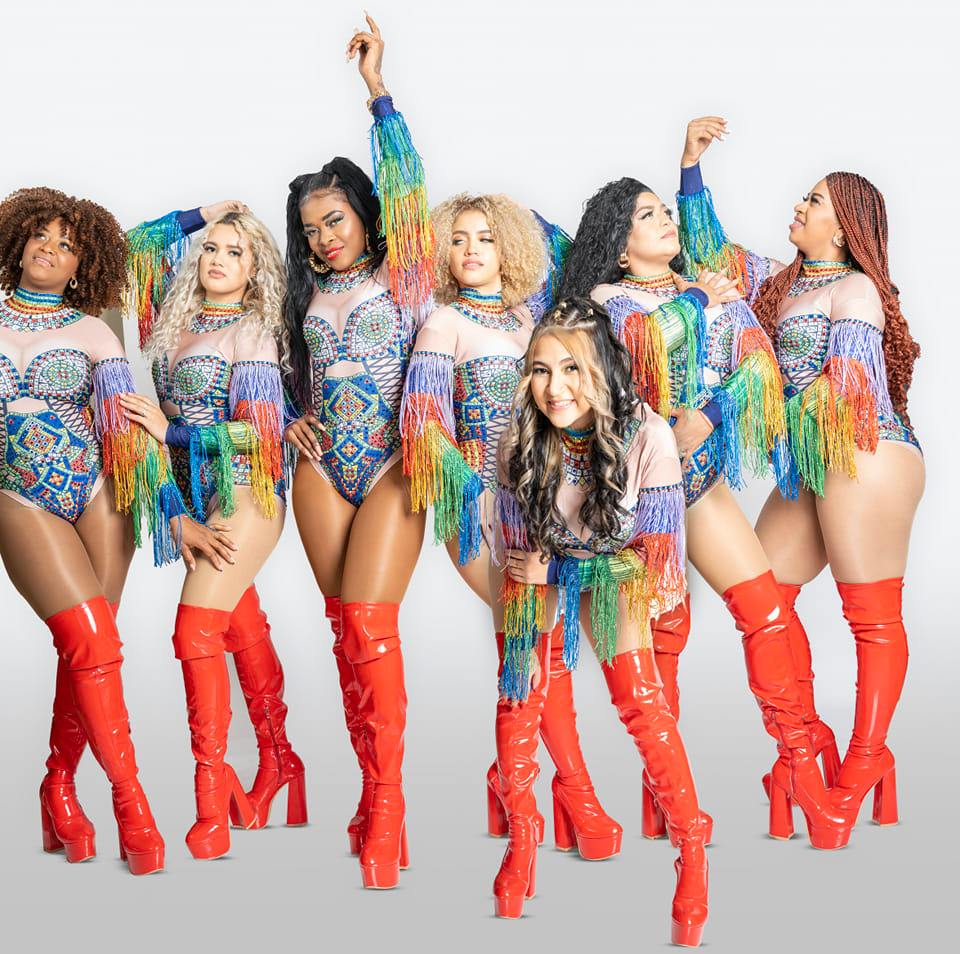
Diamante Night Club
Sunday, June 2
8:00 PM
Tickets:$50
The tropical sound of “catracha” music has crossed borders thanks to the success of Las Chicas Roland, who add versatility and sensuality to the genre with their feminine touch. In a mix of rhythms and African and indigenous instrumentation, this music originating from Honduras has taken the dance and energy of unmistakable Caribbean flavor to the next level.
SAMMY ARRIAGA (EEUU/Cuba) 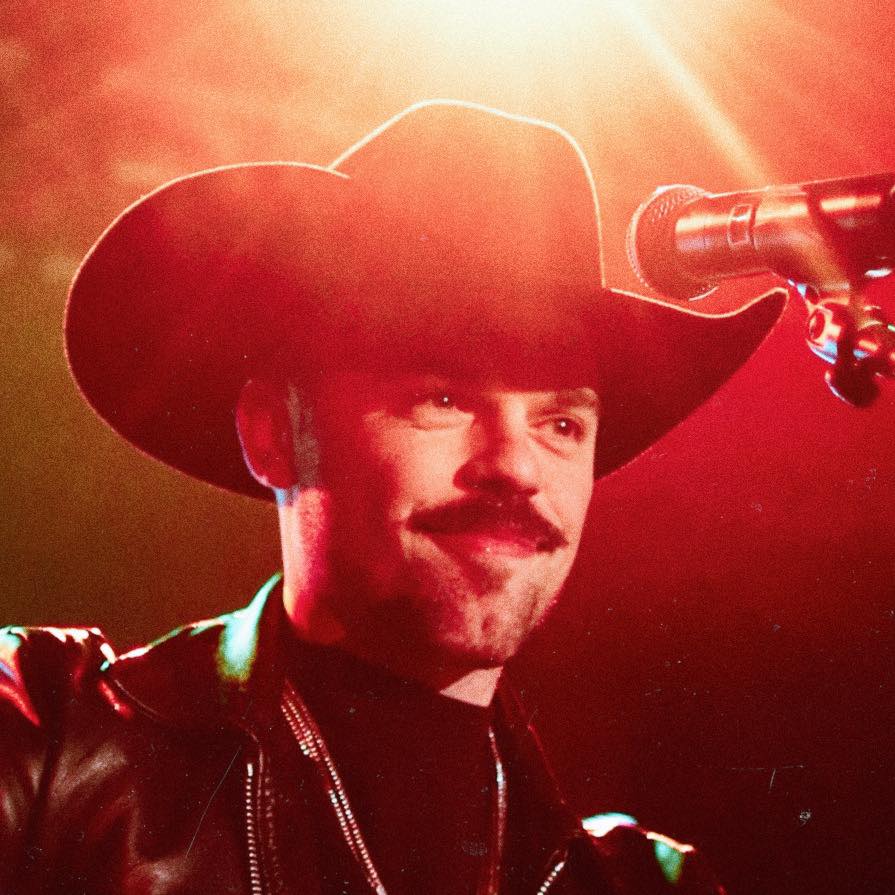
CMA Fest – Hard Rock
Thursday, June 6
10:00 AM
Free Admission
Website: https://sammyarriaga.xyz/
When you thought Nashville’s country music had it all, Sammy Arriaga infuses his Latin heritage through fresh rhythms and songs in Spanish. This breakout artist elegantly blends each musical style, maintaining the traditional cadence in the voice of romantic and modern country.
LATINO NIGHT 
New Heights Brewing Company
Thursday, June 6
5:00 – 10:00 PM
Free Admission
Music Neighbours and Musicana come together to offer a night of music and dance. Soul, blues, and funk will make the stage vibrate with the duet Cane + Cancino (US/Spain-Chile); Elia Esparza (US/Mexico) will bring freshness with her unique pop style, and Karina Daza (US/Colombia) complements this musical celebration with her jazz and Latin pop influences. Dynamic Ballroom & Performing Arts will also be present to accompany the party with dance lessons.
VIVA COLOMBIA EN TENNESSEE 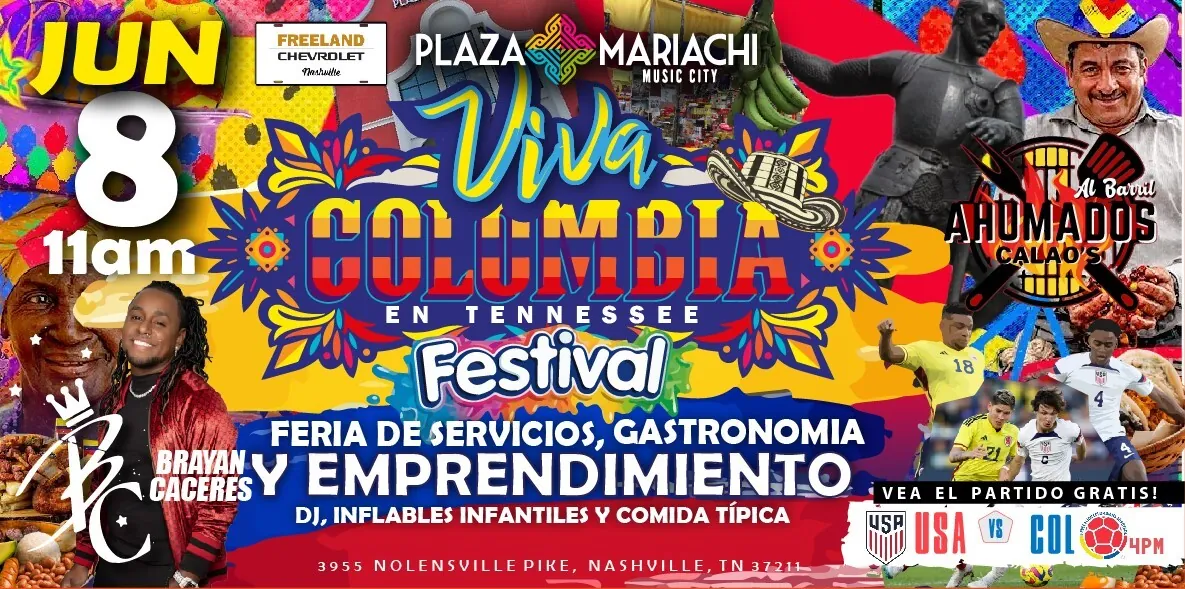
Plaza Mariachi
Saturday, June 8
11:00 AM – 10:00 PM
Free Admission
The flavor of Colombia comes to Plaza Mariachi with the best of its traditions and cuisine. At this festival, the community will enjoy a variety of flavors and music to feel like they are back in their country for a day. Naturally, soccer cannot be missing, so what better than to share the live broadcast of the match between the national teams of Colombia and the United States!
TUMBAYÉ 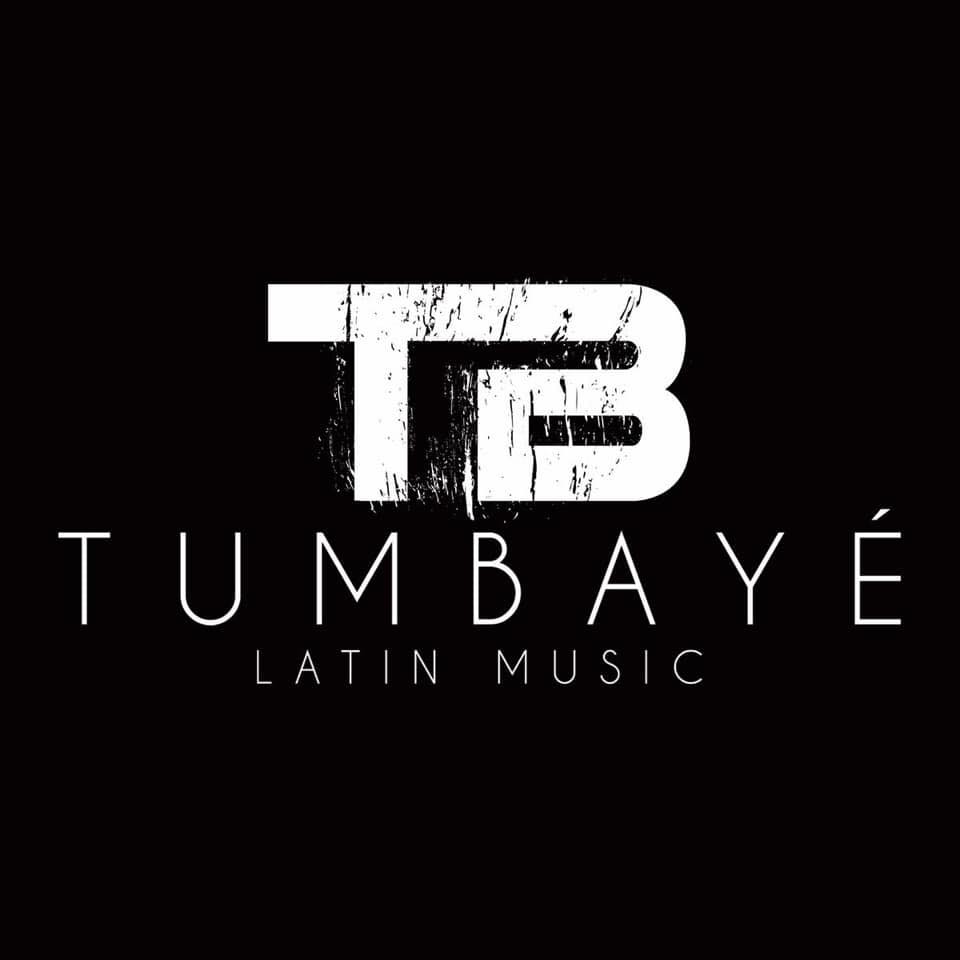
Plaza Mariachi
Saturday, June 8
5:30 PM – 7:00 PM
Free Admission
Social Media: Instagram
Salsa, merengue, and bachata are some of the rhythms to be enjoyed with this fantastic, flavorful group. The voice of Tatiana Liary (Puerto Rico), known for her urban salsa style, and the unmistakable beat of Manuel Manotas’ (Venezuela) percussion make for an explosive combination to enjoy dance music in every sense of the word.
THE KRAZY HOUR 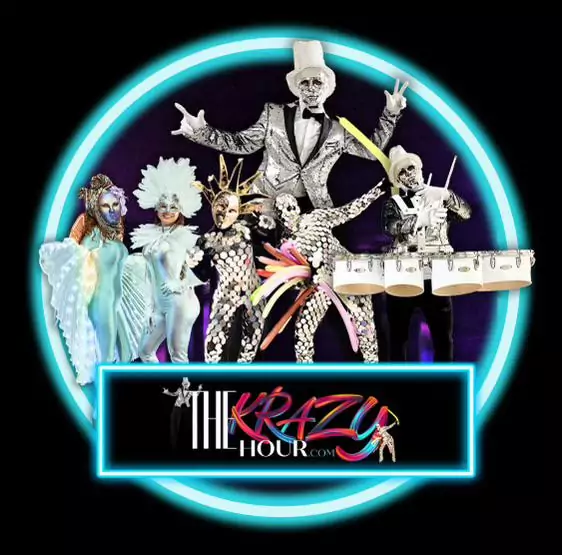
Plaza Mariachi
Saturday, June 8
7:30 PM – 8:00 PM
Free Admission
At a wedding or a quinceañera, “la hora loca” is that moment when protocol takes a back seat, and all attendees gather in a carnival of music and revelry. The Krazy Hour is a project that elevates the meaning of this tradition to another level, providing an unprecedented fun experience.
BRAYAN CÁCERES (Colombia) 
Plaza Mariachi
Saturday, June 8
8:30 PM – 10:00 PM
Free Admission
The authentic voice of Brayan Cáceres resonates with memories of traditional salsa heard in Colombia. With a repertoire of original songs and classic versions of the genre, this concert promises a pleasant evening of dance to close the “Viva Colombia en Tennessee” festival with a flourish.
MAELO RUIZ (Puerto Rico) 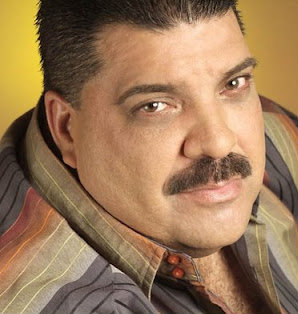
Bucanas Night Club
Friday, June 14
9:00 PM
Tickets $50+
The renowned salsa singer, known for songs like “Te Va a Doler” and “He Vuelto Por Ti” and for a successful career that has made him one of the most important artists in the romantic style of the genre, will arrive at Bucanas Night Club to provide a warm and joyous night to an entire community of fans who have grown up with his music.
BANDA EL RECODO y LA ADICTIVA (México) 
Plaza Mariachi
Friday, June 14
9:00 PM – 2:00 AM
Tickets $80
Norteño music lights up the night at Plaza Mariachi with these two traditional groups. Banda El Recodo has remained for generations since the 1940s, positioning itself as a pioneer in promoting this genre. On the other hand, La Adictiva, with a career spanning over 20 years, offers a captivating musical experience with vibrant costumes and choreography.
OS MUTANTES (Brasil) 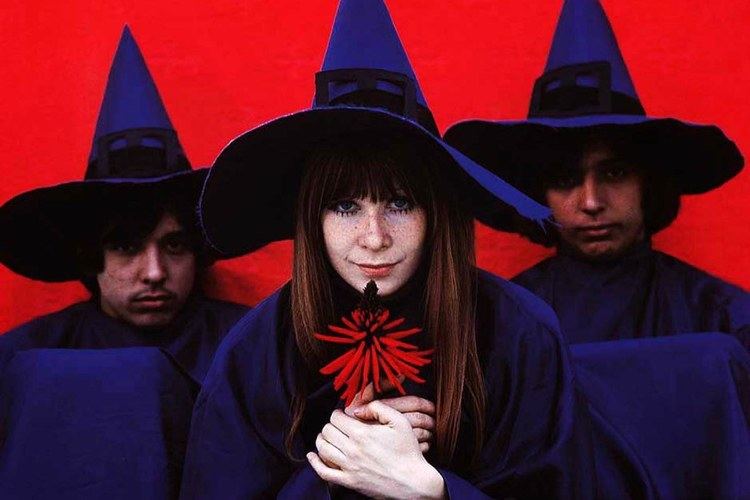
The Mil – Cannery Hall
Wednesday, June 19
7:00 PM
Tickets: $30
Experimental and psychedelic rock have made Os Mutantes one of the most recognized bands not only in Brazil but on the international scene. Since 1966, this group has challenged musical conventions, inspiring new generations to create an authentic and innovative style from Brazilian rhythms and rock’n‘ roll.
2024 SPIRITS OF SUMMER, “SYMPHONIC NIGHTS”
Nashville Symphony Schermerhorn Symphony Center
Thursday, June 27
6:30 PM – El Salón Havana, VIP Experience, Main Lobby
7:30 PM – Spirits of Summer, Laura Turner Hall
Tickets $100+
A sensory journey through the streets of the beautiful city of Havana. Music combined with a menu of electrifying cocktails is an experience you can’t miss. A team of cocktail experts will seduce the palates of attendees to win the Symphony’s Spirits of Summer award, while Cuban tropical sounds accompany this magnificent evening.
Violet at the Nashville Repertory:
A Victorious Final Show

Violet is a straightforward musical about a young woman hoping a faith healer can heal her of a disfiguring facial scar. She travels across the south by bus in 1964, meeting people and learning to see worth in herself and others that’s more than skin-deep. Based on a short story by Doris Betts, it was adapted into an Off-Broadway show in 1997 and has since been performed on Broadway. It is simple, funny and hopeful. It’s a solid 90’s show, and I can’t imagine it being performed better than the Nashville Repertory Theatre did on opening night, May 12.
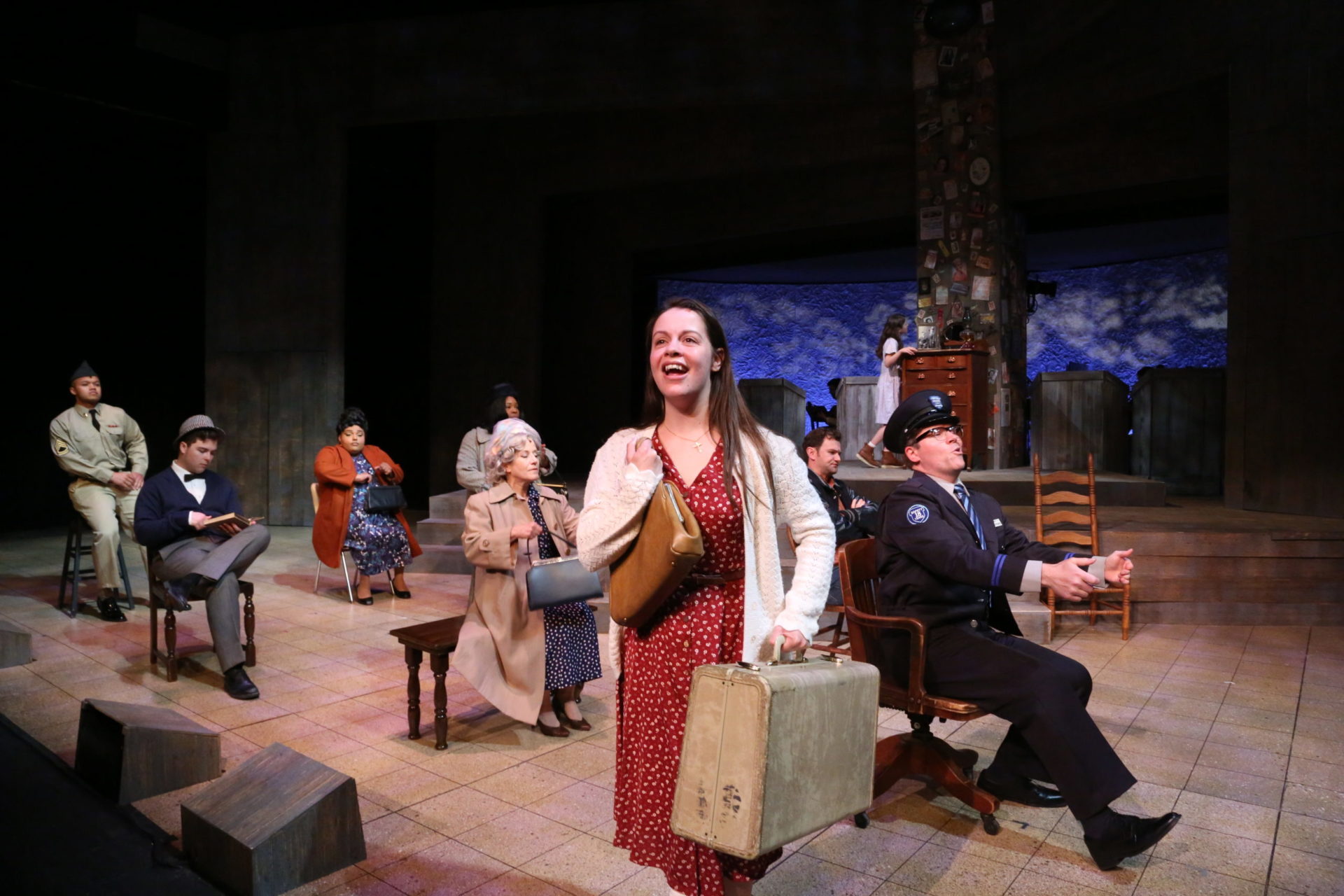
It is performed with the full orchestration of the original musical, and the sound is full and colorful. Besides having the standard Broadway instrumentation, it features varied guitars, banjo, mandolin, and more. The music travels with the characters, moving through different genres: folksy, classic country radio, Memphis music hall, gospel, and 90’s Broadway sound. Some microphone effects are used for diegetic singing, which adds to the performance.
The Andrew Johnson theater at TPAC doesn’t have a pit, so the musicians are set behind the stage, their heads silhouetted against the backdrop like the orchestra in Disney’s Fantasia. Like the rest of the staging, lighting, props, and costumes, this is part of a perfect balance.
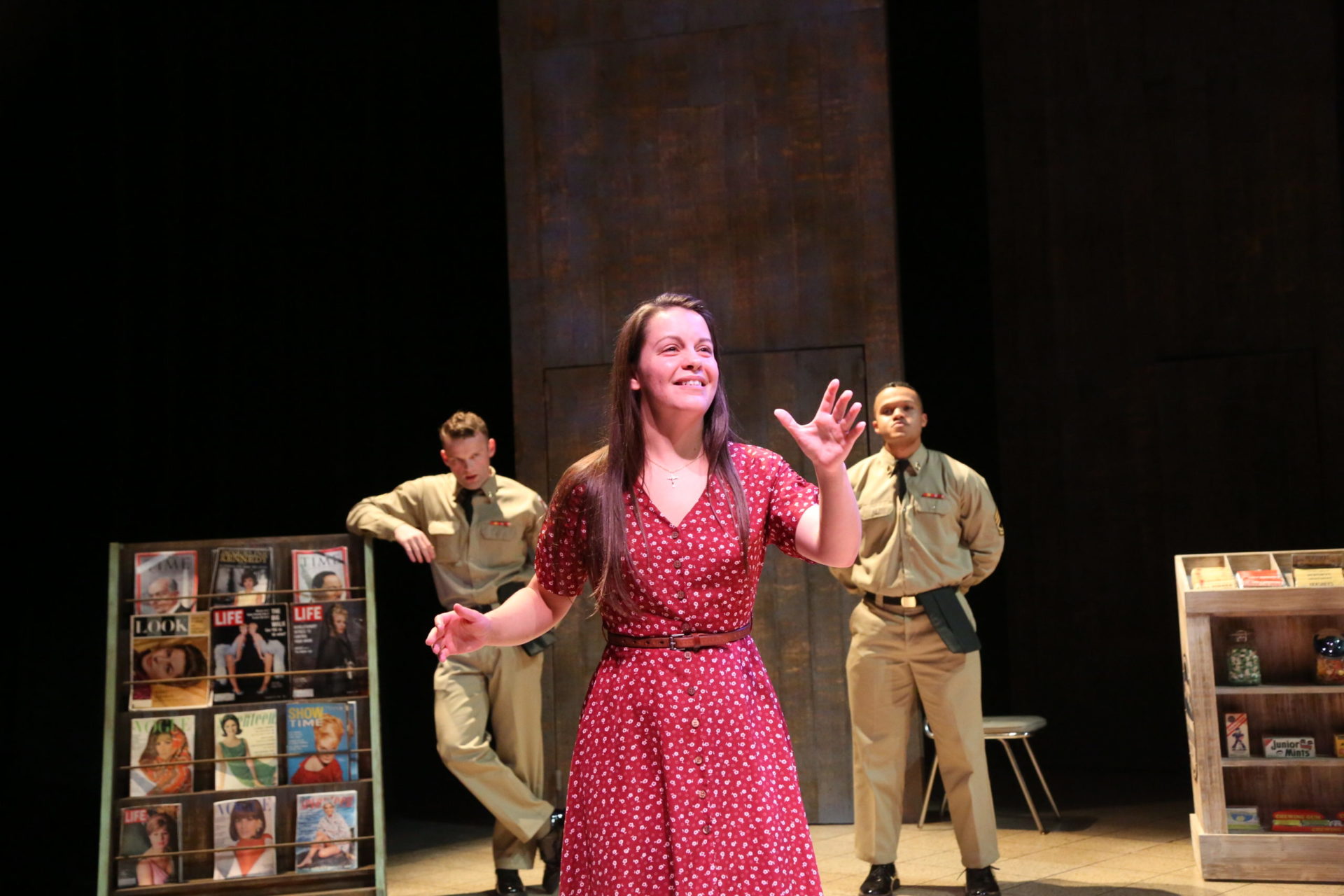
As the play is about inner beauty versus outer beauty, I thought it is an interesting choice that they don’t put any scar makeup on Violet. The Nashville Repertory’s study guide stated that the original staging of the show deliberately refrained from scar makeup. That makes it easy for the audience to see past Violet’s scar, and it emphasizes how she’s more bothered by it than anyone else is. Part of me wondered if I might have empathized more with her genuine pain if I could have seen it, and if it could have been a helpful challenge for the audience, but maybe I just wanted to see a cool scar.
The main trio of actors, Violet and two soldiers she meets on the way, Flick and Monty, have excellent chemistry with each other. The characters argue and tease each other a lot, and it would be easy for this to become grating. Instead, they are funny, likable, and sympathetic. Kelsey Brodeur is an earnest Violet, avoiding entitled protagonist syndrome while not shying away from her character’s flaws. She is hilarious in her performance in “All to Pieces,” the song where she cherry-picks facial features from celebrity magazines while being teased by the soldiers. Mike Sallee Jr. is Flick, who doesn’t have a scar but goes through life being judged by the color of his skin. The printed program had a different actor listed, but a bookmarked-sized insert gave the cast bio for Mike Sallee Jr. It didn’t state if this was a last-minute change or had happened early in the rehearsal process, but by the performance Sallee gave opening night, it felt as if he had been there from the beginning. His Flick has great rapport with Violet and Monty, and his performance in ensemble songs meshes perfectly. Nathan Quay Thomas is a charming Monty, the innocent bad boy soldier. He balances Monty’s character well, so that the teasing doesn’t feel mean, and Monty’s rare moments of seriousness are naively sincere.

There are flashbacks to Violet’s childhood and her girlhood self appears several times throughout the play, sometimes in flashbacks, other times in dreams, but my favorite song with her, “The Luck of the Draw,” is a parallel scene, where both Violets share the stage, adult Violet playing poker while young Violet is taught poker by her dad. Riley West made a likable young Violet.
Every cast member sang well and with good voices, but the woman that blew me away was Jennifer Whitcomb-Oliva as a soloist in the faith healer’s choir. She has a strong, beautiful voice. Her solo in the gospel number “Raise me Up” is in a scene mocking smarmy faith healers, but when she sang on opening night it felt like Sunday morning and Aretha Franklin must have been humming in her grave. The faith healing preacher is played by Ryan Greenawalt, who has an obvious blast sermonizing. Beth Anne Musiker plays a sweet old lady and a hooker with comedic skill, and Piper Jones performs beautifully as a music hall singer.
Tracey Copeland-Halter directs a balanced and enthusiastic musical for the Nashville Repertory Theatre. It’s a victorious end to their 22/23 season and it has me looking forward to their next season with high expectations.
The Nashville Repertory Theatre will be performing Violet through May 21st. For tickets and more information about the show, click here: https://nashvillerep.org/violet
The Pirates of Penzance at Nashville Opera
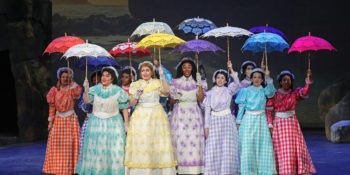
I saw the Nashville Opera’s final performance of Gilbert and Sullivan’s The Pirates of Penzance at TPAC’s Polk Theater this past weekend. This comic opera premiered over 150 years ago and still gets laughs. The plot is silly: Frederic has been indentured to pirates through an accident (his nursery-maid misheard his father, who asked her to indenture him to a pilot, not a pirate), and as he comes of age, he leaves the pirates to obey his duty to destroy them. He runs across beautiful girls and falls in love with Mabel, the daughter of a Major General. Frederic is then visited by the pirate king who tells him that, although he’s been alive for twenty-one years, since he was born on a leap year he’s only technically had five birthdays. Since his contract of indenture said he would serve with them until his 21st birthday, 63 years in the future. Frederic’s sense of duty compels him to return to piracy, a lot of policemen and pirates run around the stage until then end, when all the pirates give up piracy in the name of the queen.
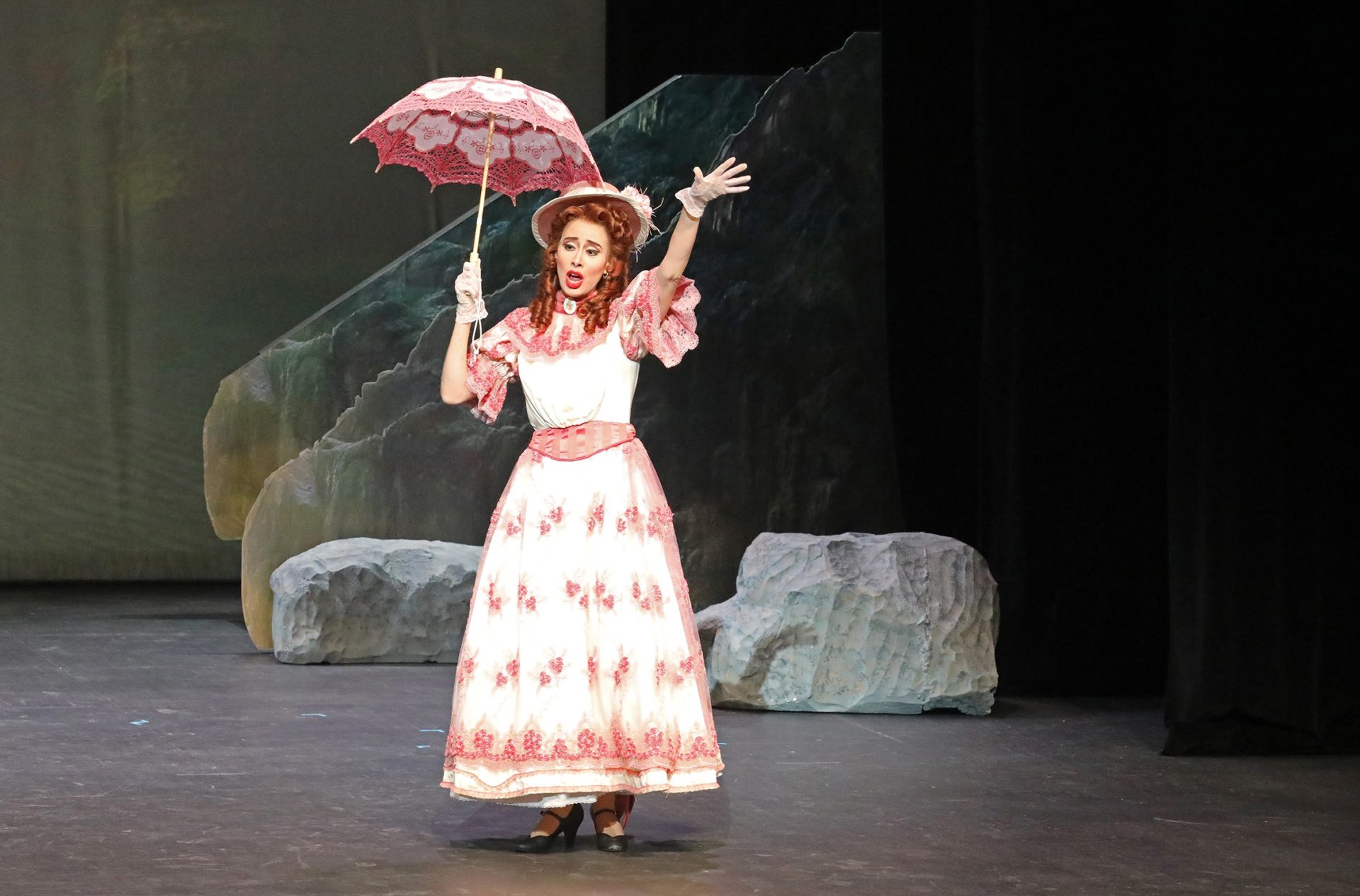
One of the first things I noticed when arriving for the Sunday matinee were the children playing with piratical photo props, hooks and hats and telescopes. Then when we sat down, kids were peering over the wall into the pit to stare at the musicians and their instruments. It reminded me of when I was a kid in 2006 and got to see the Nashville Opera perform another Gilbert and Sullivan comic opera, Iolanthe. I remember being captivated by the stage, the music, and the jokes. If I had been one of the children watching The Pirates of Penzance on Sunday, I would have considered the moment when the head of police’s pants fall down to reveal his heart-covered boxers to be the peak of comedy. I don’t recommend taking children to every opera just as I don’t recommend taking them to every movie, but the Nashville Opera doing Gilbert and Sullivan is a perfect introduction to the stage.
Before the curtain went up on the full house, Stage Director John Hoomes came out and told us that five minutes before the end of the Saturday-night performance, the actress playing Ruth (the nursery-maid) fell on stage, but got back up and finished the show. After it had ended she told him she thought her wrist was broken. It was, and she spent all night at the ER. Later I found out that she took minimal painkillers for the performance and is awaiting surgery later this week. Despite this, she would continue her role in the Sunday show. “The cast she’s wearing is real, don’t think it was a directorial choice,” Hoomes said.
After he spoke, a spokeswoman from a corporate sponsor came out to read a long buzzword-collage speech off her phone. I’m thankful for generosity that supports the arts, but it made our pre-show enthusiasm wane slightly. After that was over, the lights dimmed and the orchestra, under Conductor and Nashville Opera Music Director Dean Williamson, began the overture. They were able to regain the pre-show enthusiasm; then and throughout the entire opera, the orchestra sounded excellent. It was full, balanced, colorful, and able to move fluidly through each mood. Each soloist was strong, and together they captured the sense of humor needed to partner with the singers and to make the show.

One of the delightful things about The Pirates of Penzance is the amount of voices it has; there are thirteen young women under the Major General’s care (if I counted correctly), and a matching number of pirates. We get rich moments of over a dozen women harmonizing with each other, the same with the men. When they all harmonized with each other the effect was overwhelming. I can sit down and play a seventh chord on the piano and it just sounds like a chord, but if I hear a large group of people singing a seventh chord I think “Oh the tension!”
The sets were simple and most of their personality came from the projected backdrop, designed by Barry Steele. Mainly being a simple background, it occasionally participated in the comedy. As the nervous policemen sang their ridiculous song, the backdrop, which had been mere arches and stone walls of a chapel, suddenly had Monty Python-esque photograph cutouts of policemen with wagging mouths popping out from behind the stones. My teenage brother was with me and he thought this was a particularly hilarious touch. Later when people sang about the paradox of leap-year birthdays the entire background spun upside down. At the end, as the pirates were asked to yield in the name of Queen Victoria, a massive image of her looking particularly dour and victorian slid up and covered most of the screen, adding to the suddenness and pomposity of the deliberately goofy deus ex machina.
Glenn Avery Breed designed the costumes. The pirates wore good classic, colorful attire, the sort of look that cheap children’s costumes mimic poorly. My favorite costumes were those worn by the girls, light dresses with two different sets of patterns in many different colors. It allowed the girls to blend together and separate the differently-dressed Mabel from them, while having bright pops of color. The cut of the dresses made the choreographed dances, the sways and the movements of their colorful matching umbrellas, more fun.
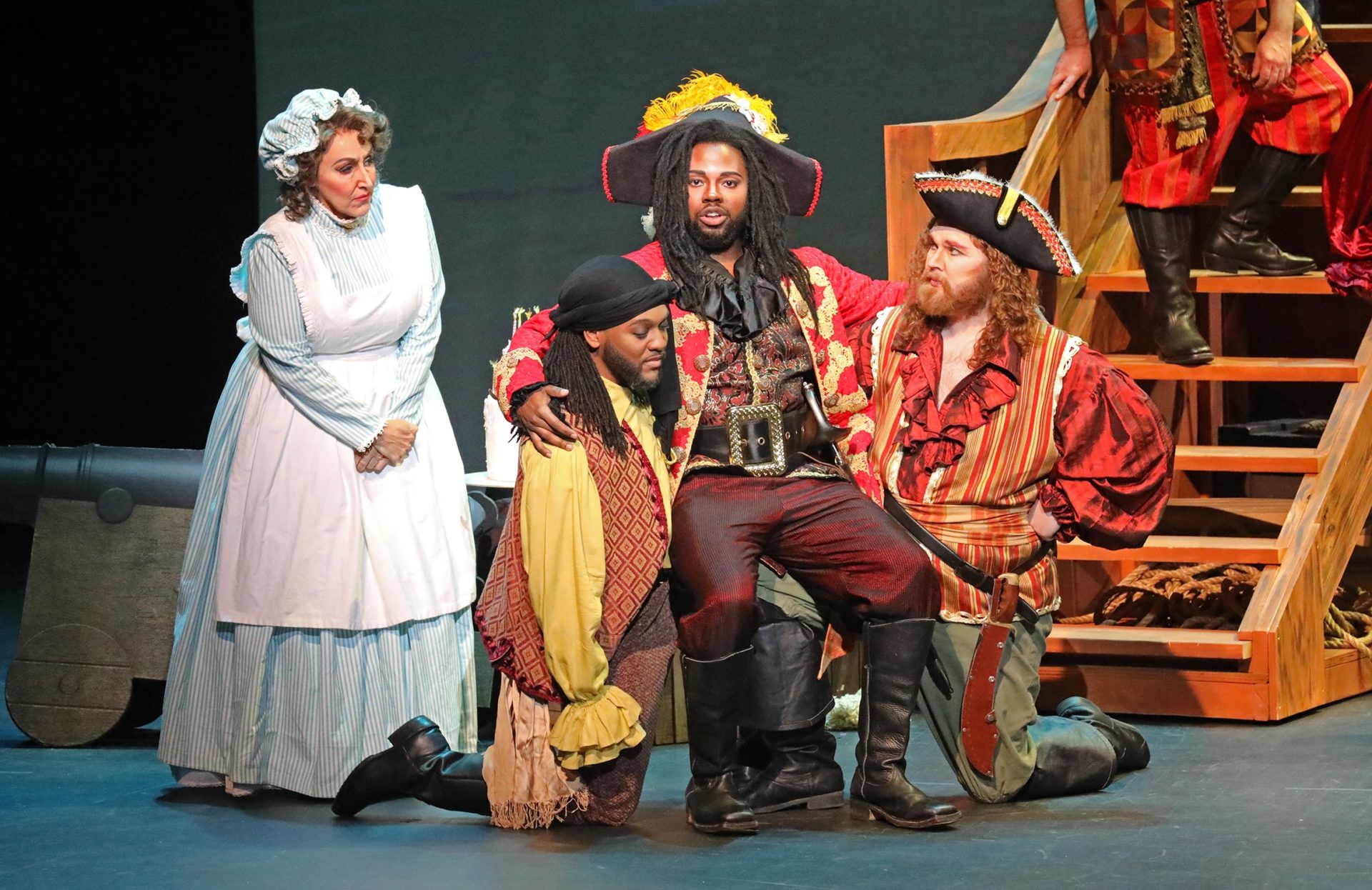
Tosha Marie’s choreography was well done, funny and taking full advantage of the large cast. Each of the dances fit their songs and scenes, but my favorite choreographed moment was when the girls, singing that they’ll be kind to Mabel and allow her to have a private moment with her new boyfriend Frederic, sing about the weather while slowly shifting across the stage to listen in on the oblivious couple.
The orchestra partnered perfectly with the cast, which as a whole was solid, with several standouts. Emily Pulley played Ruth, the piratical nursery-maid, and she was easily my favorite performer in the show. She is energetic, has a lovely voice, and absolutely top-notch comic timing. Added to all this was admiration that she was able to achieve this with a freshly broken wrist. Judging by the size of the cast, which covered most of her hand and went up past her elbow, it must have been quite painful. After intermission her character appeared in piratical costume, and with a goofy hook stuck on to the end of her cast, making her look lopsided with a massive white hooked arm. The cast may have not been a directorial choice, but it might prove to be one in the future.
Evelyn Saavedra played Mabel, giving her oblivious extraness of the comedic love interest, and she sang her comically ornate songs with humor. Alysha Nesbitt played Kate, and her voice and stage presence made her stand out from the other women on stage. Curt Olds was Major General Stanley. His physical comedy was excellent and when he was creeping around in his long nightgown, trying to hide from his daughters, he channeled Marx brother energy from their famous scene in Duck Soup.
I saw the Nashville Opera do the Pirates of Penzance in their 2015 season, and years before that I had seen the Kevin Kline theatrical version. As I attended the show on Sunday, I remembered some of the major plot points and that it was funny. What I hadn’t remembered is exactly how funny it is and why it is such a staple of comic opera. I look forward to being able to take my son to future performances of such excellent comic opera.

